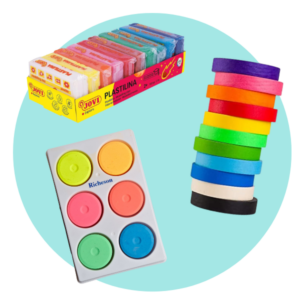Let’s be honest, grandparents can make or break the rhythm of a young family.
Some pop in occasionally for a birthday or a holiday photo. Others quietly weave themselves into the everyday routine, helping, showing up, being there in ways that don’t just entertain the kids but actually shape how they see family.
Those are the hands-on grandparents.
The ones who don’t need a calendar reminder to call. The ones who know which lunchbox the picky eater prefers, or which lullaby still works on a cranky toddler. The ones who somehow manage to stay relevant as the kids grow from blocks to bikes to iPads.
Here’s what I’ve noticed they do differently.
1. They learn their grandkids’ real rhythm
It’s not about memorizing every snack preference or nap time, it’s about paying attention.
Hands-on grandparents don’t treat time with their grandkids like a random playdate. They tune in. They learn the flow of the day, the moments that matter, and the little patterns that keep things smooth.
They know which hour kids get squirrelly before lunch, when to suggest a snack versus a screen break, and which bedtime story is currently on repeat.
I’ve seen this with my own parents. My mom doesn’t just “drop by.” She checks first: “When’s Emil’s nap today?” or “Is Greta working on her school project after lunch?” It’s not about control, it’s about respect for the kids’ natural rhythm.
And kids feel that. They relax faster around grandparents who move at their pace. It keeps the visit calm instead of chaotic, connected instead of overstimulating.
That sense of attunement is what makes kids want to spend time with them again.
2. They pitch in with purpose
There’s a big difference between showing up to babysit and showing up to be part of the team.
Hands-on grandparents don’t see family time as a favor. They see it as participation.
They don’t just keep the kids busy, they keep the household humming. They might fold laundry while the kids play, unload the dishwasher after lunch, or sweep up crumbs before anyone notices.
It’s not flashy. It’s foundational.
And here’s the key, they do it without commentary. They’re not trying to prove anything. They just make life a little easier because they know the real gift isn’t toys or treats, it’s time and calm.
As family researcher Dr. Susan Newman puts it, the best intergenerational relationships happen when grandparents “offer support without stepping on toes.” It’s that subtle dance of helping without hovering that keeps the peace and the connection intact.
- If you want to discover genuine happiness in your 60s and beyond, say goodbye to these 5 outdated beliefs - Global English Editing
- 7 small joys people rediscover once they stop trying to stay “young” - Global English Editing
- If a woman compliments you with these 9 phrases, she sees your soul, not your status - Global English Editing
3. They show up for the small stuff
Anyone can make it to a birthday or a holiday dinner. It’s the Tuesday-night soccer game or the Thursday-morning school performance that truly count.
Hands-on grandparents make a habit of showing up for the ordinary.
They’re in the bleachers at the local gym when no one else could take the afternoon off. They join school family days, even if it’s just for 30 minutes between errands. They remember the art show, the science fair, or the class bake sale.
Greta still talks about the time her grandma came to Family Friday at school with a thermos of coffee and her sketchbook. It wasn’t a milestone, just another week, but to Greta, it meant everything that someone outside our household cared enough to show up.
These moments build something quiet but powerful, the sense that you’re part of a larger web of love.
No amount of gifts or vacations can replace that steady presence.
4. They play their way but also the kids’ way
You can tell a lot about a grandparent by how they handle playtime.
Some stick to what they know, board games, baking, gardening. Others dive headfirst into the messy, noisy, imaginative chaos that defines early childhood.
The best ones do both.
They bring their world to the kids but also step into the kids’ world. They’ll teach how to knead bread and how to build a Lego spaceship. They’ll read a classic novel aloud and pretend to be the dragon attacking the playroom fort.
Hands-on grandparents say yes to play even when it’s not their thing.
Grandparents who live by that don’t just fill time, they build trust.
And that’s the kind of bond that survives all the growth spurts and attitude shifts to come.
5. They make themselves part of the weekly rhythm
Families thrive on predictable rhythms. Kids especially.
Hands-on grandparents know this instinctively. Instead of random visits, they create touchpoints, little traditions that give shape to the week.
It might be Saturday pancakes, Sunday afternoon walks, or a quick FaceTime every Friday before bed. When kids can count on those moments, they start to look forward to them, and that’s what keeps the relationship alive.
My dad has what we call Tuesday Library Duty. Every week he picks up Greta from school, they browse new picture books, grab a cookie from the café, and return the old stack before closing time. It’s routine, but it’s theirs.
He doesn’t cancel unless absolutely necessary. That consistency tells Greta she can rely on him.
These tiny rituals are what childhood memories are made of. They turn fleeting visits into emotional landmarks.
6. They keep learning
It’s tempting for grandparents to lean on experience, after all, they’ve done this before. But the truly hands-on ones know that parenting keeps evolving.
They ask questions. They read the same books their kids are reading about gentle discipline or emotional regulation. They don’t scoff at boundaries or routines, they learn them.
My mom once asked me, “What does your preschool mean by co-regulation?” She wasn’t mocking the term; she genuinely wanted to understand how to handle big feelings the same way we do.
And it’s not just thoughtful, it’s effective.
A 2021 study found that when grandparents provided extended caregiving, their adult children’s parenting practices shifted, showing more authoritative (and fewer inconsistent) strategies.
When everyone’s on the same page, the household feels like one smooth system instead of three generations pulling in different directions.
That’s the real magic, learning together instead of clashing over who’s right.
7. They share family stories but keep them light
Storytelling is one of the oldest forms of connection, and hands-on grandparents use it beautifully.
They tell stories about their own childhoods, the family house, even the silly mistakes they made, but they know where to stop. They don’t guilt-trip or turn tales into lectures.
Instead, they sprinkle stories naturally into conversation.
Like when Greta lost her first tooth and my dad said, “Your great-grandpa once sneezed in class and his tooth flew clear across the room.” She giggled so hard she forgot to cry about the blood.
That story connected four generations in one laugh.
Kids need those links, they give them roots. But they don’t need to be weighed down by nostalgia or back-in-my-day speeches. Hands-on grandparents make the past feel playful, not heavy.
When family stories are told with warmth and humor, they become treasures kids want to pass on.
8. They stay reachable
Not every grandparent can live nearby, but the hands-on ones still find ways to feel close.
They text, send photos, record short videos, or mail handwritten notes. They learn FaceTime, even if it takes a few tries. They don’t let distance or technology get in the way.
What matters isn’t the platform. It’s the consistency and tone.
Emil lights up when my dad sends a quick garden video, “Hey buddy, look what bloomed today!” It’s 15 seconds long, but it keeps their connection alive.
Those small check-ins say, I’m thinking of you, even when miles apart.
That’s the secret sauce of closeness, it’s not grand gestures; it’s emotional availability. The kind that makes kids feel they can always come back, even when they’re older, busier, or need advice they can’t quite ask their parents for yet.
Final thoughts
Grandparenting isn’t about perfection, it’s about presence.
Hands-on grandparents aren’t necessarily the ones with endless time, money, or patience. They’re the ones who show up, stay curious, and meet kids where they are. They build relationships through rhythm, not randomness.
They don’t need to buy connection. They build it through the steady drumbeat of ordinary days, checking in, showing up, lending a hand, telling a story, learning something new.
And when those little habits add up, they become the glue that keeps families close through every season.
Because when a child grows up feeling that a grandparent was really there, not just at the big events but in the everyday moments, they carry that warmth into adulthood.
That’s what hands-on grandparents understand.
They’re not chasing perfection. They’re choosing presence. And that, more than anything else, is what keeps them close, through the toddler years, the teen years, and long after the toys are boxed away.
Related Posts
-
7 things nurturing grandparents do that make grandkids run to hug them every time
There’s a reason some grandparents get greeted with a slow shuffle and a polite “hi,”…
-
7 things grandchildren remember most vividly about their grandparents
There’s something magical about the bond between grandparents and grandchildren. Ask most adults today and…
-
7 things thoughtful parents do that make their grown kids call them just to talk
Let’s be honest—there’s something special about getting a call from your adult child that isn’t…













